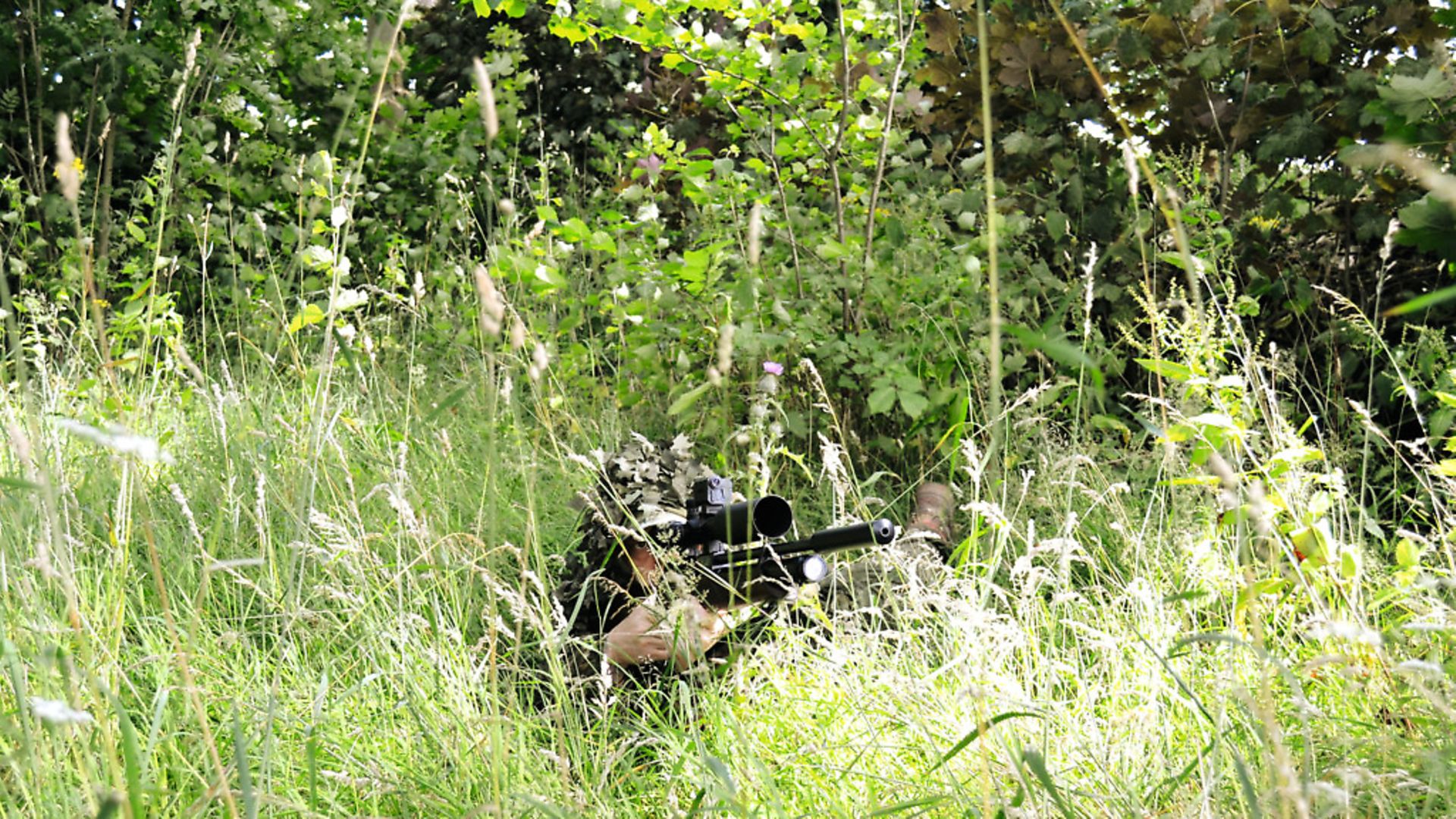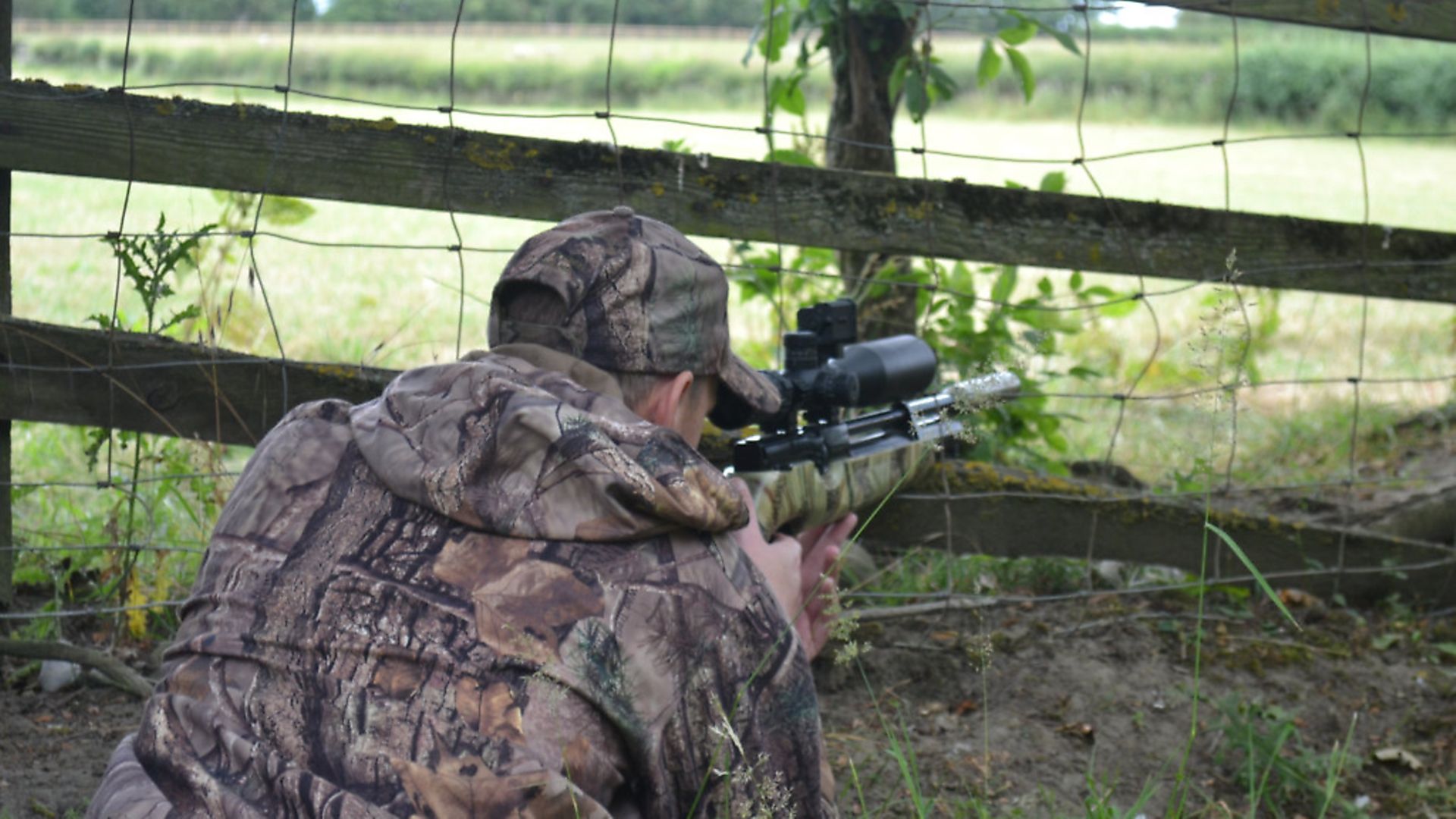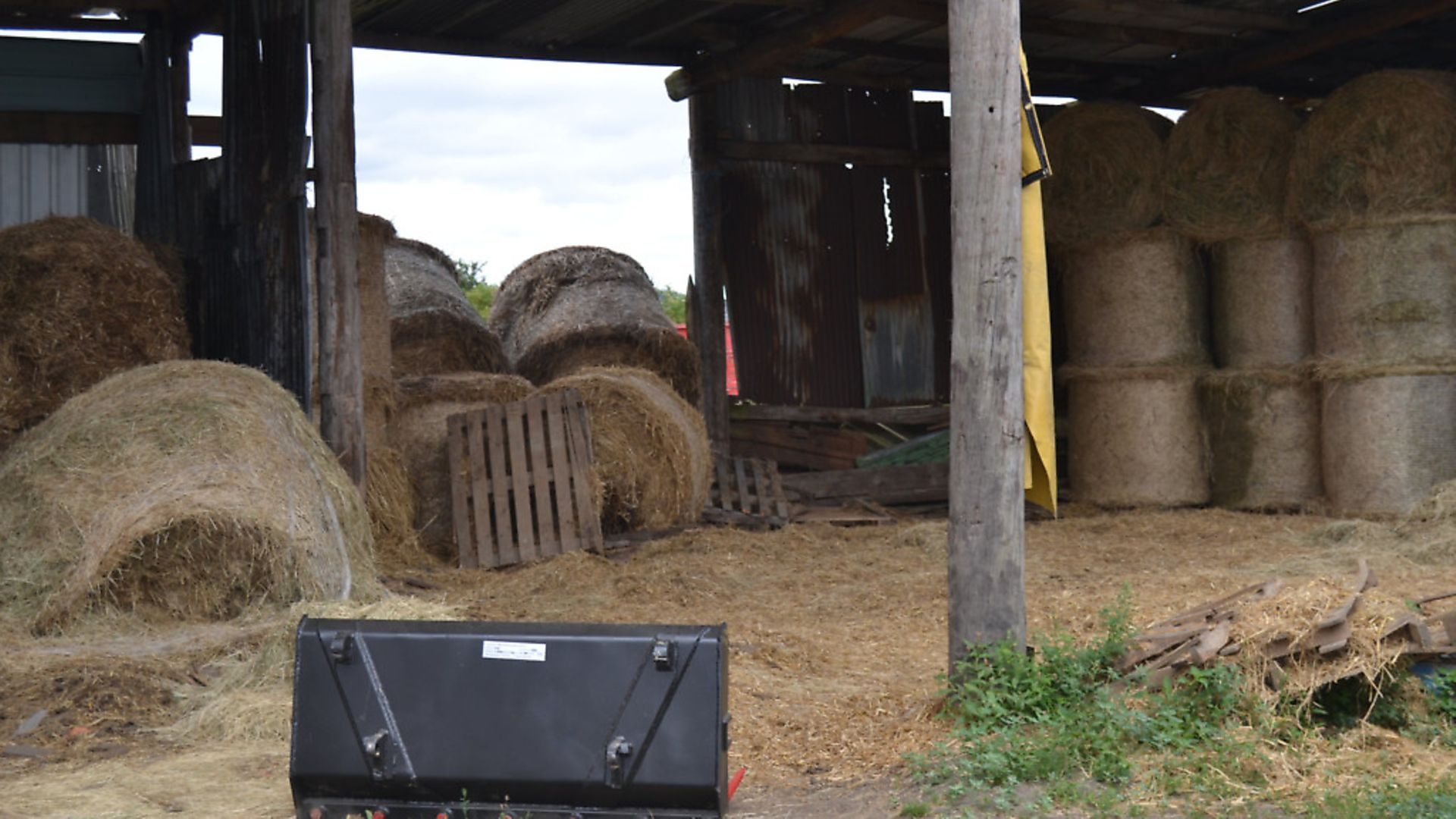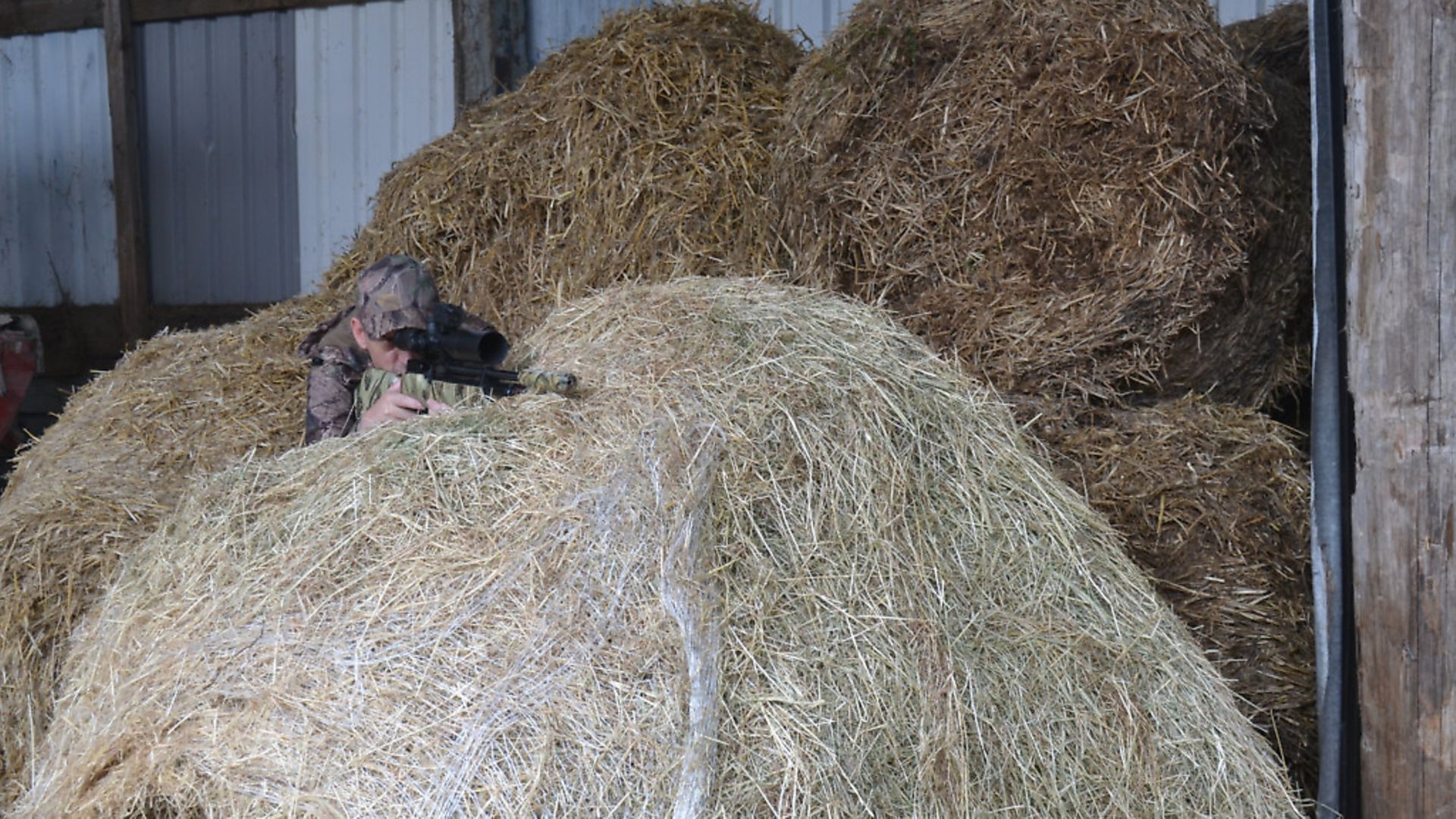Phil continues his series on the essential techniques all hunters need to master
 credit: Archant
credit: Archant
This month I’m continuing with my series of going back to the foundations of our sport, looking at the tactics we need to employ in the field, and how to get the best from them. Last month was stalking, this month, it’s static hunting. Static hunting is just that – static – meaning you don’t move. It’s the opposite of stalking and turns the tables on your quarry. Instead of giving them the advantage of potentially remaining hidden and spotting you first, as you try to move closer, you take that away by waiting in an ambush position and letting them come to you.
Static hunting can be employed in various ways, either by sitting in cover, a hide or another previously prepared location, or simply by hiding near to an area where quarry are known to congregate.
Prior knowledge of the area and the target species is essential for success. It’s no good just plonking yourself down in a bush somewhere and hoping. Sitting near a busy rabbit warren is a good example and can be very effective, because hitting them as they leave their burrows doesn’t really send an alarm underground to the rest, so you can find you have a continual source of shots for a long period and need very little in the way of cover. The busier the warren the more action you can expect so it’s up to you to decide if the time spent waiting is more effective and will yield greater numbers than stalking would.
 credit: Archant
credit: Archant
Look for it
A hide can be built when targeting more wary species, to help keep you hidden. You can build this as fancy, or as minimalistic as you like, depending on how often and for how long you intend to use it each time, but its intended job is to make sure it offers concealment, and allows you to take shots at any angle you may require in your chosen kill zone, above all else. You can use previously erected structures too, which have an advantage in that the animals are already used to them. Horse boxes, stables, farm buildings, bales, anything you can find and use to remain hidden will work, as long as it is in the right place. How do you find the right place then? Simply by watching and looking for it. Over time, you will build a mental pattern of what animals prefer which parts of your permission, so if you see the same couple of magpies in the same tree near the grain shed every time you go up there, you can make a pretty good bet that if you can get there before them, they will show up. The same goes for roosting wood pigeons, or any other species. They don’t do anything without a reason, so if they did it today and the day before, it’s because it served a purpose, food, water, shelter, whatever … chances are it will still serve that purpose tomorrow.
 credit: Archant
credit: Archant
Artificial bait
Certain species can be drawn into range of an ambush by using decoys, or even baited feeders, the latter works extremely well against grey squirrels. For the most part, finding an area the animals are already frequenting is your best bet. It is extremely difficult to shape their behaviour and this is where a lot of people go wrong. A fake nest made of twisted grass with some hens’ eggs in it is a tempting meal for a magpie or a passing corvid, but many attempts at this have failed simply because they weren’t in the right place. If the magpies aren’t comfortable feeding in the area in which you place your ambush, they will treat that area with more suspicion than if it wasn’t there in the first place.
I find the same with rat bait. If you have them already out and feeding after dark, on natural farm products, and you add an artificial bait, it can act as a rat repellent as opposed to attracting them because it is new, and new things tend to be dangerous for wild animals. Using a bait they are used to, letting them do what they naturally do anyway, works way better than trying to change their behaviour ever will. Of course, in places where food is in short supply or at desperate times, these tactics might well prove most effective, but you will have to work out what works best for you in your area.
 credit: Archant
credit: Archant
Mobile hide
Personally, I tend not to use a hide, but rely instead on camouflage, my clothing and positioning. A full set of gloves and face mask are essential because nothing will give you away quicker than your big pale face, and even dark-skinned people need to cover up because the darker the skin the more it tends to shine. I use the Jack Pyke LLCS (Light Leaf Concealment System) which is a thin-mesh, leafy suit available in either their brown autumn/winter pattern or the green summer one, and it is devastatingly effective. I also have a white snow version that I made myself using a few cans of white spray paint and even that offers unrivalled camouflage in such a lightweight and easy-to-use suit. Being made of such thin material, you simply wear it over your regular hunting clothing and the patchwork of small leaves that cover the entire surface perfectly match the real foliage, blowing in the breeze and reacting exactly as if they were real leaves. Nothing I have ever tried before or since works better. It really is a hide you wear, enabling you to set up anywhere at a moment’s notice, and move just as quickly should you need to reposition, which is probably the biggest downside to a permanent hide.
 credit: Archant
credit: Archant
Retrieval
The whole point of static hunting is to lever the advantage away from the quarry and ambush them from a predetermined and concealed position. If you move around, make noise, or get in and out of that position in the presence of any animals, they will quickly become aware of the danger so you have to make sure you arrive when there is nothing around, and preferably leave when it’s all clear, too.
Deciding when to retrieve kills will depend on the quarry and the circumstances. Rabbits and squirrels will generally not care much about dead examples of their kind; magpies can be attracted to them, as can crows, and woodpigeons, but it depends how they have fallen and they can often cause alarm, too, so you need to weigh up the benefits against the downsides of coming out of your position to make a retrieval and potentially being spotted. You will have to make these calls on the day because every scenario is different, and there are no hard and fast rules when dealing with wild animals.
 credit: Archant
credit: Archant
Combined tactics
Of course, the tactics we have covered so far can be combined. You can stalk up to a position and take a shot, and then decide to hold that position and wait, if you think there might be another opportunity before long. If nothing presents itself, you can then stalk to another position likely to yield a result and then sit tight there for a bit, and so on. I have had some very successful days in the field using a mix of these tactics.
As you build a better picture of your permission, you become more aware of where these quarry hot spots are, and you can minimise your time, bypassing quieter areas to concentrate on the busier patches and using a combination of stalking and static ambushing once you are there. A wood set-up with multiple feeders and a good population of squirrels is a perfect example of when this tactic would work most effectively.
And finally...
Static hunting is all about concealment...and unless you’re in a light-tight hide, that means keeping still. Resist the urge to keep popping up your head to look around, or fidgeting about. Remember, even when you can see no quarry, that doesn’t mean they aren’t there, and looking for danger signs with eyes, ears, noses and senses far more in tune with the landscape than we’ll ever be. Good luck and I’ll see you next month with another essential hunting skill to examine.
__________________________________________________
Phil Hardman’s win-win technique of hunting
Hardman’s hunting: Seeing the wood through the trees
A great day hunting pigeons and squirrels with Mick Garvey